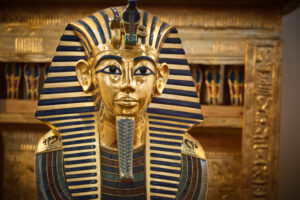Gold: A Metal with Magical Powers
The comments below are an edited and abridged synopsis of an article by Dominic Frisby
Frisby talks about gold: its history, its fascination, its future. It really is the most amazing metal, not least because it is indestructible. Life may be temporary, but gold is permanent.
No other substance is as durable—not diamonds, not tungsten carbide, not boron nitride. You can shape this enormously ductile metal into virtually anything. An ounce of gold can be stretched into a wire 50 miles long. You can beat it into a leaf just one atom thick. Yet you cannot destroy it.
You can change its form by dissolving it in certain chemical solutions or alloying it with other metals. You can even vaporize it. But the gold will always be there. It is theoretically possible to destroy gold through extreme methods such as nuclear reactions, but in practical terms, gold is indestructible. That makes it unique among natural substances: The closest thing we have on earth to immortality.
Perhaps that is why practically every ancient culture associated gold with the gods and why the Egyptians believed it had magical powers that gave you safe passage into the afterlife.
In a museum in Cairo you will find a golden tooth bridge made for a well-to-do Egyptian 4,500 years ago. In 2021 a metal detectorist by the name of Ole Ginnerup Schytz unearthed a Viking gold hoard in a field near Jelling in Denmark. The gold was just as it was when it was buried 1,500 years earlier. Gold does not corrode, it does not tarnish, it does not break down over time.
Frisby concludes that gold’s main purpose is as a store of wealth. It is dense, tangible value: Pure money. Over the years we have used all sorts of different things as money: shells, pieces of specially printed paper, computer bits, promises. But one has outlasted them all, and that is gold.

